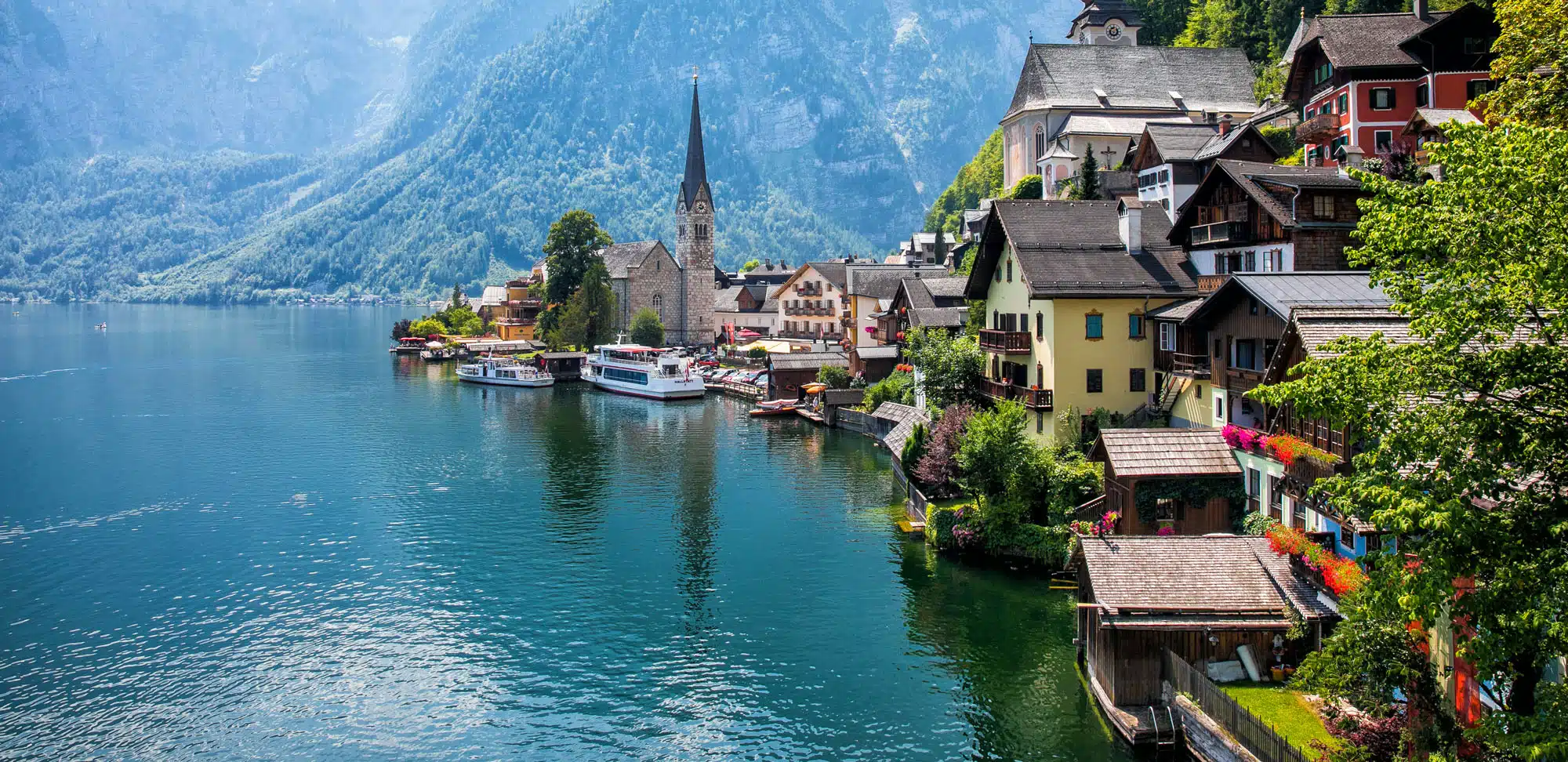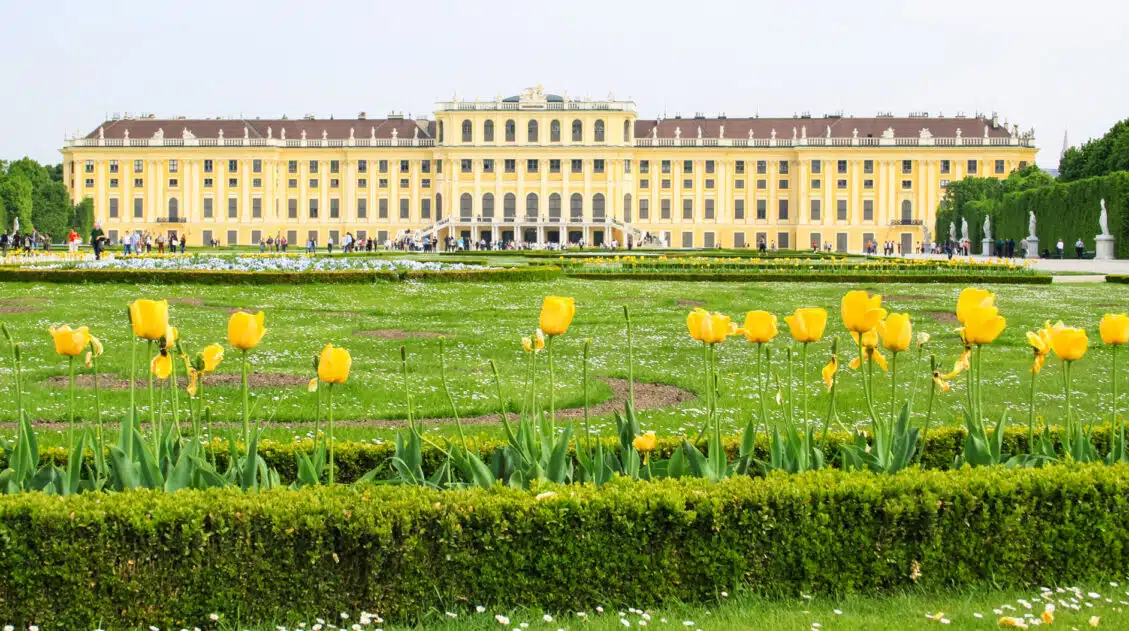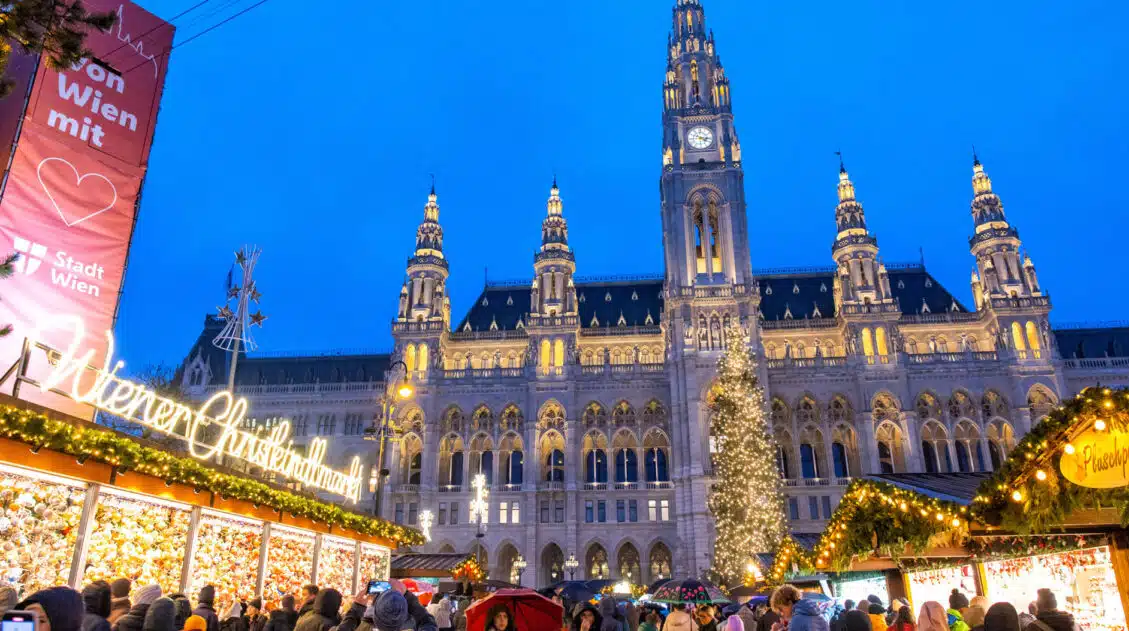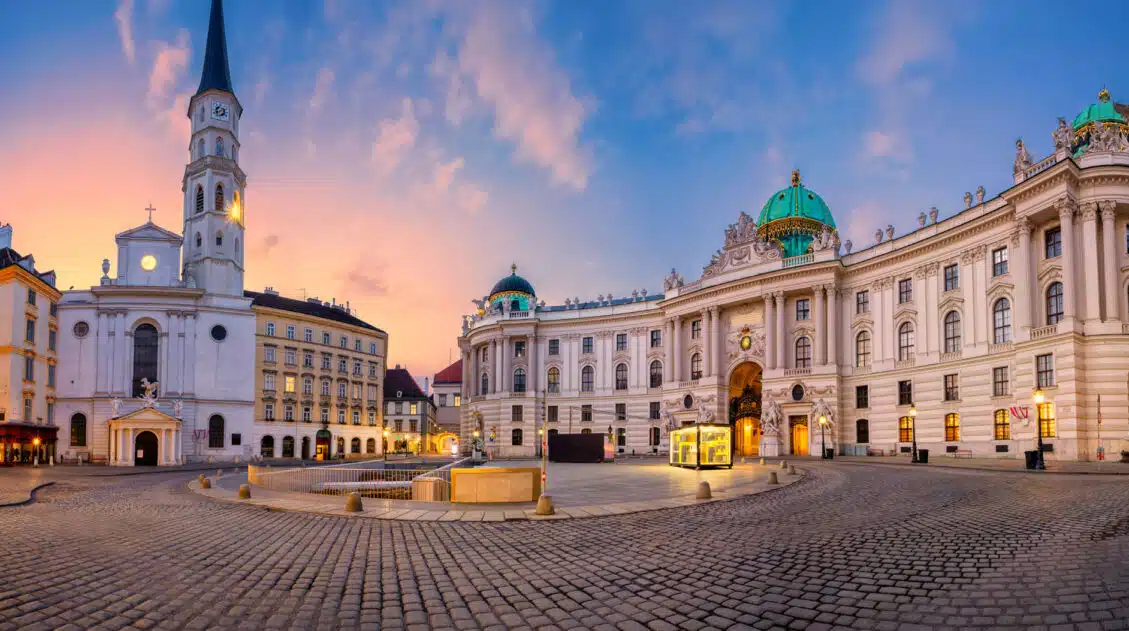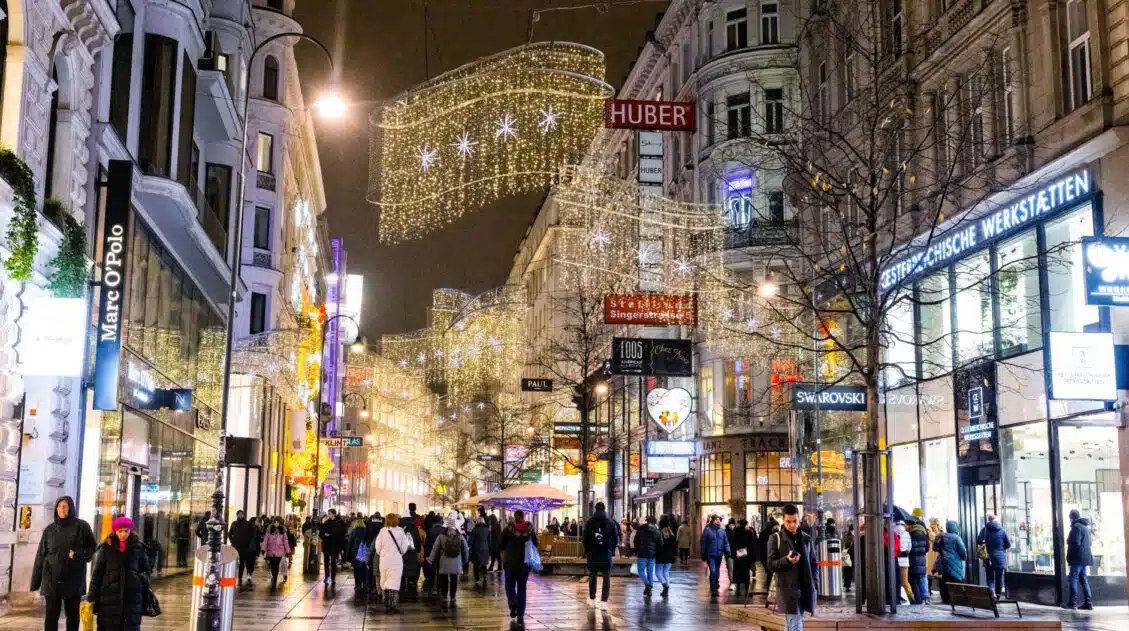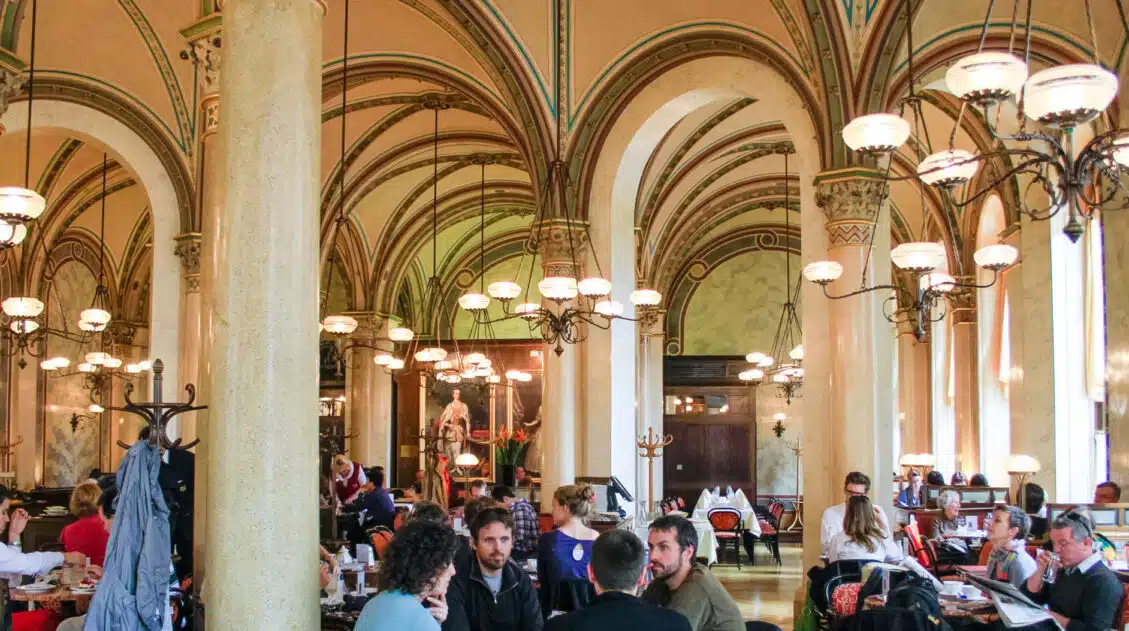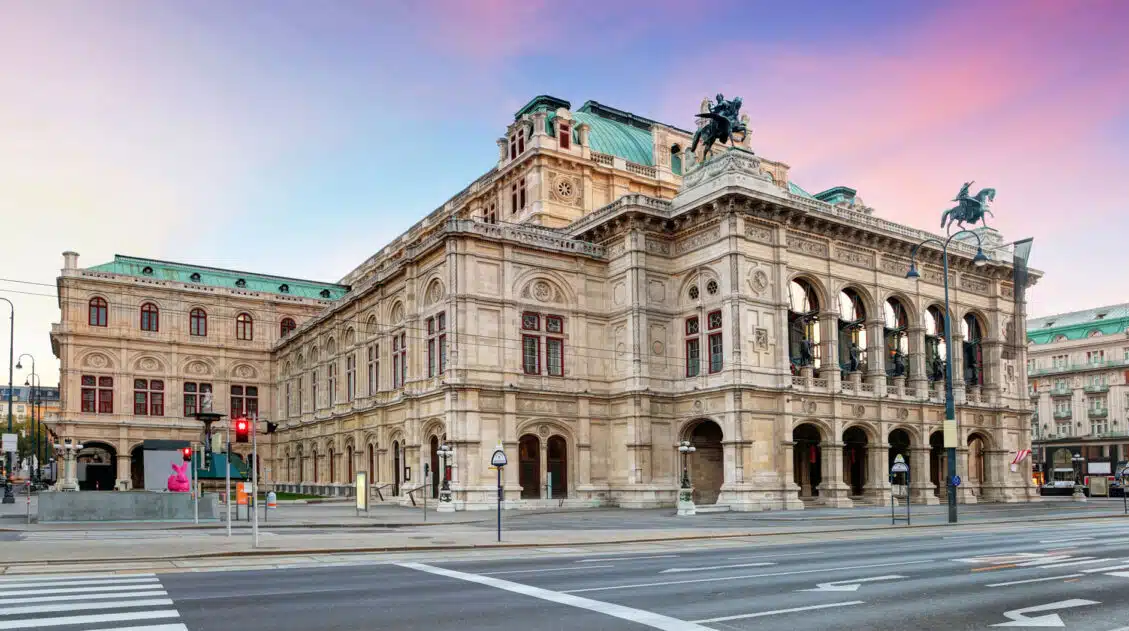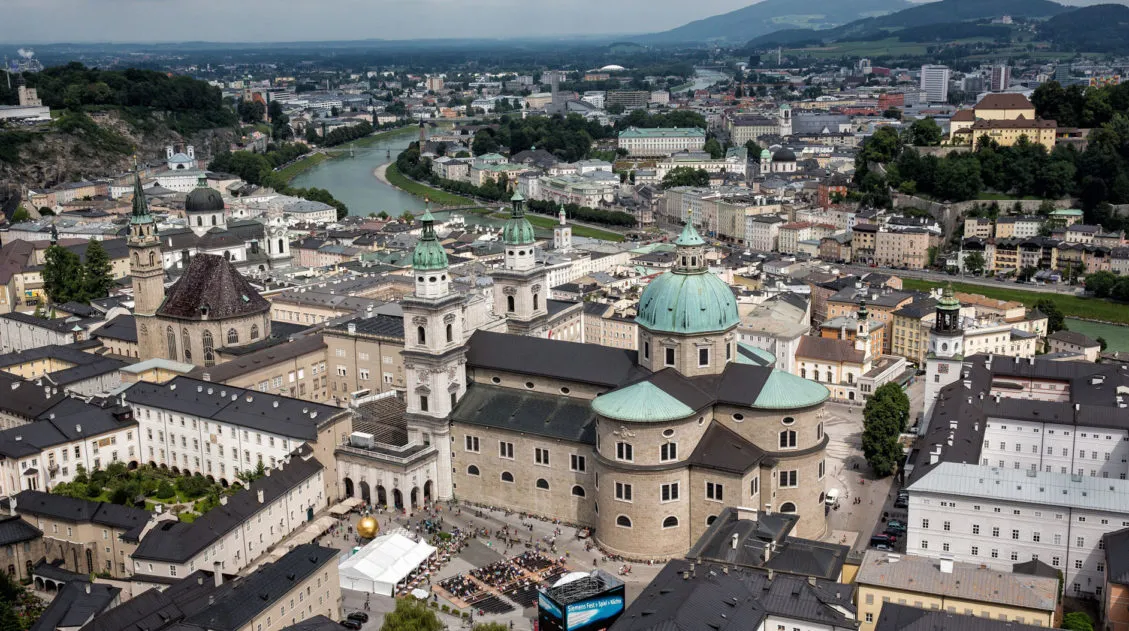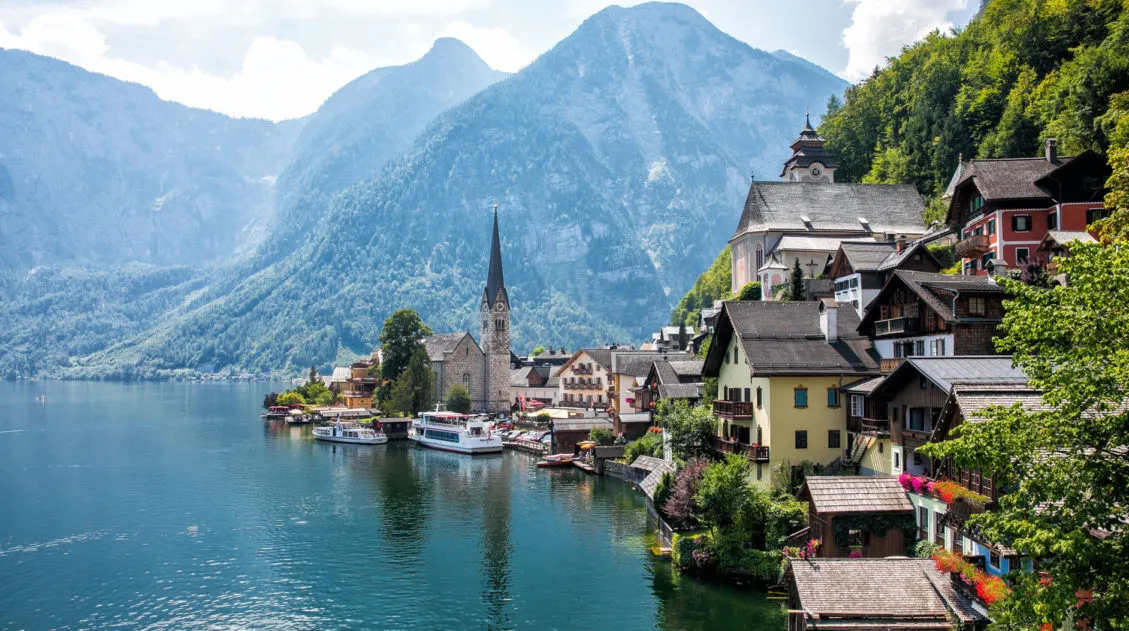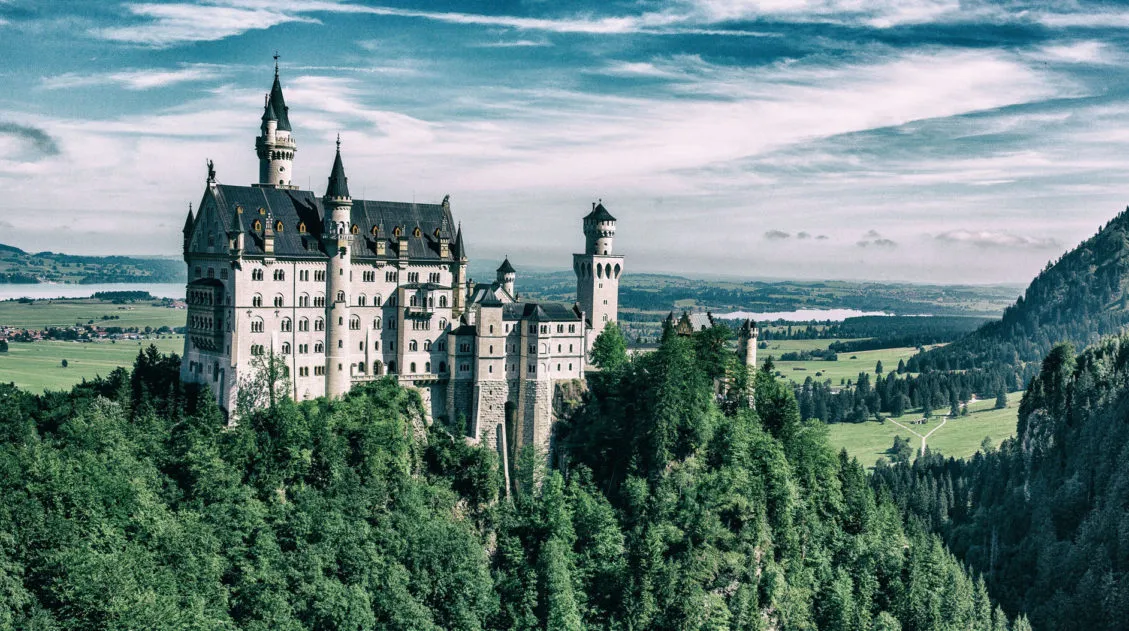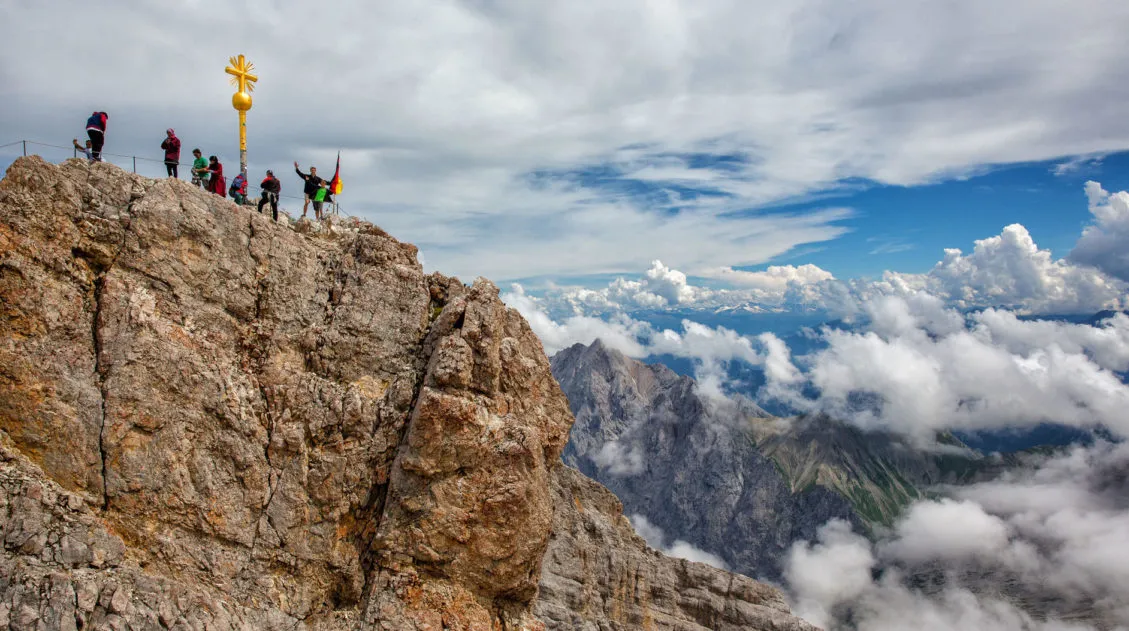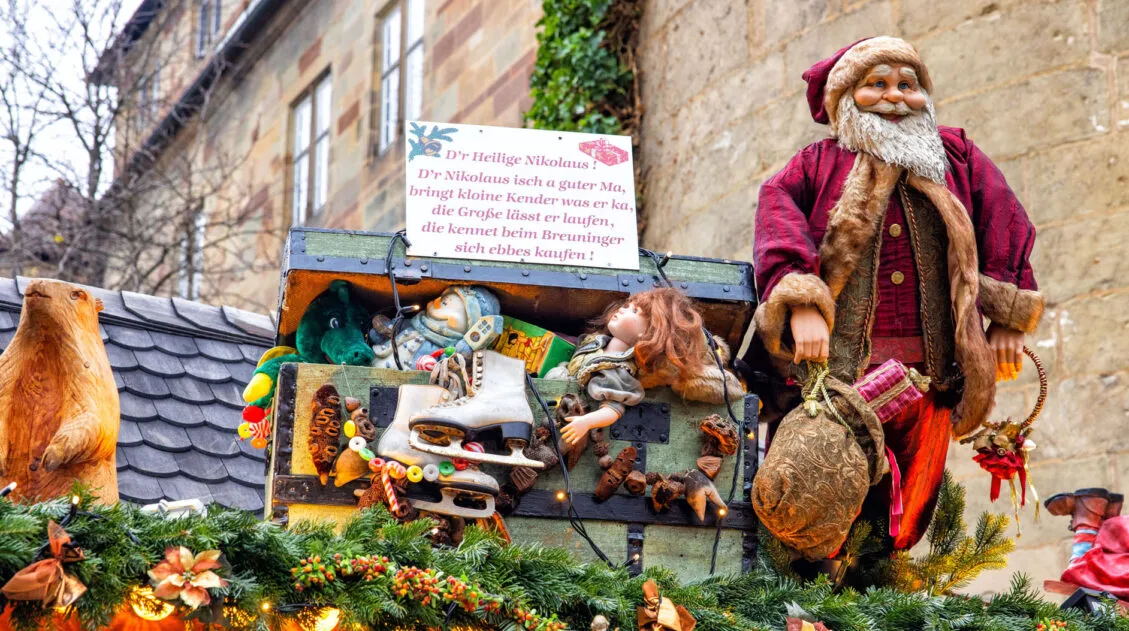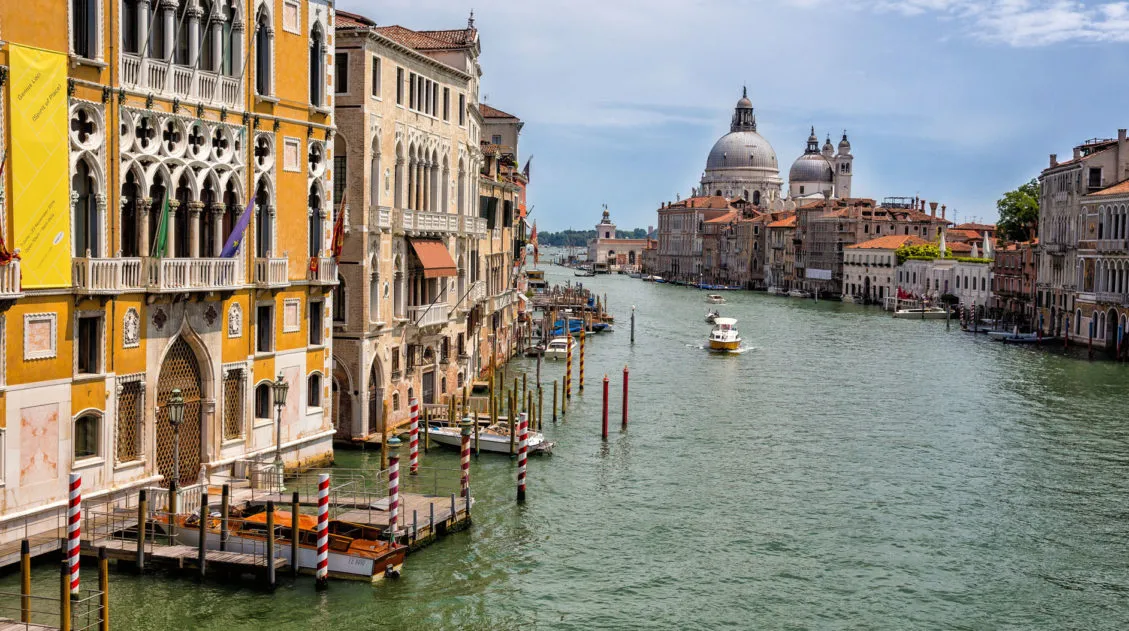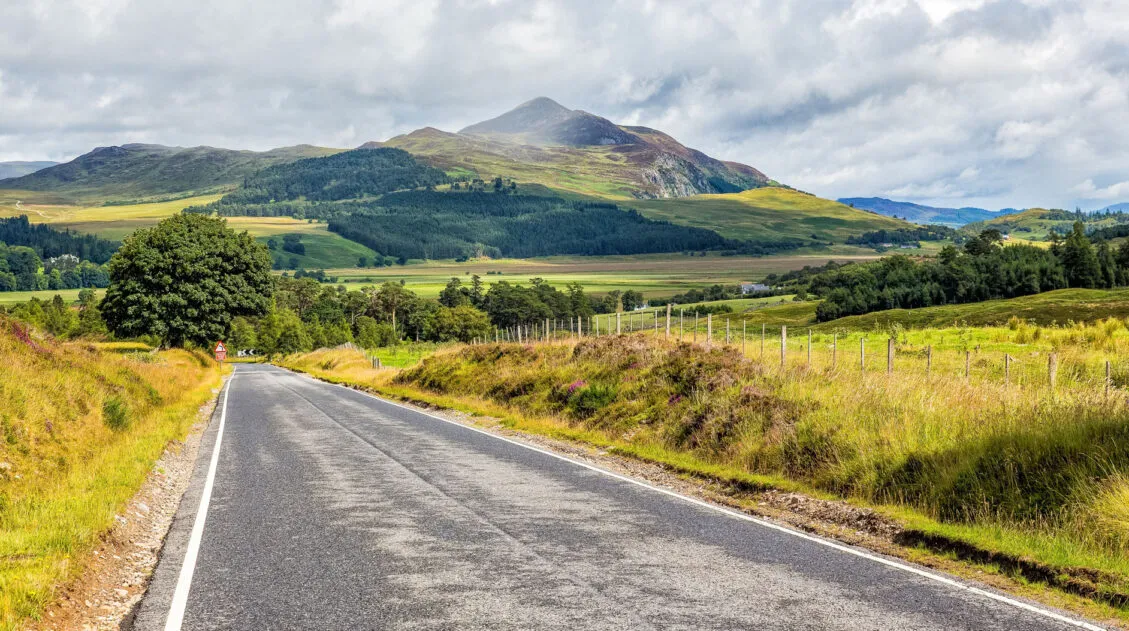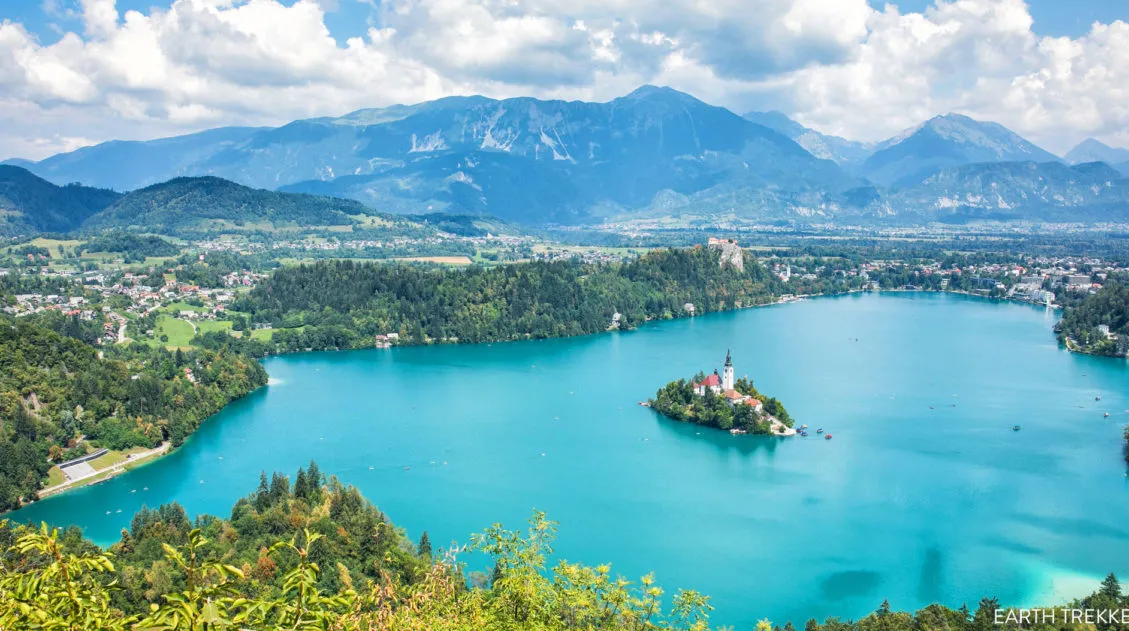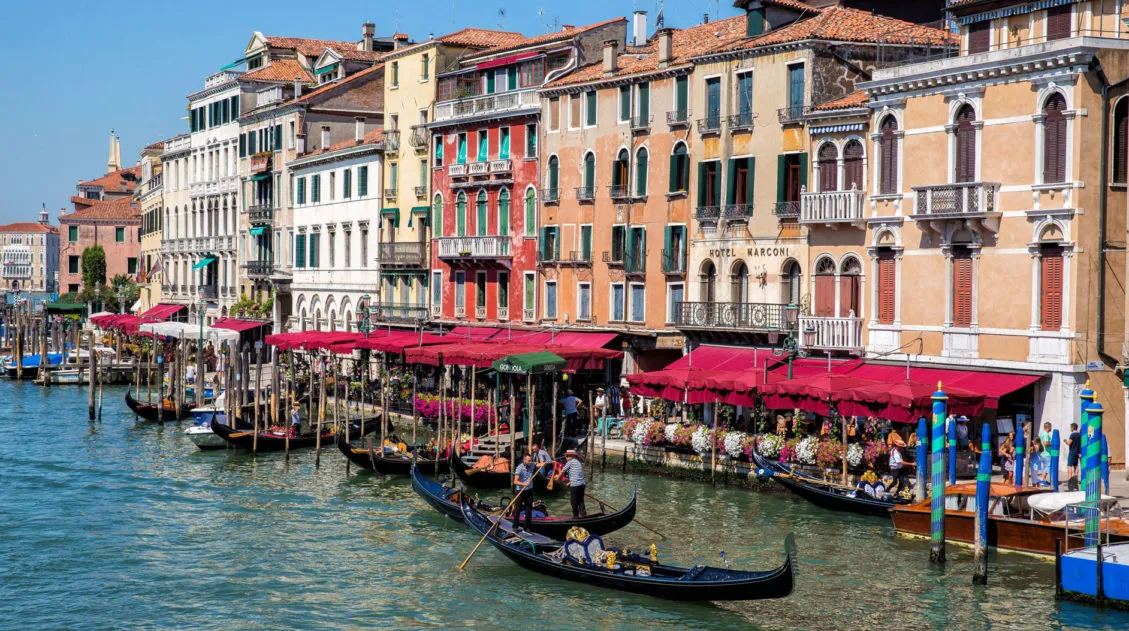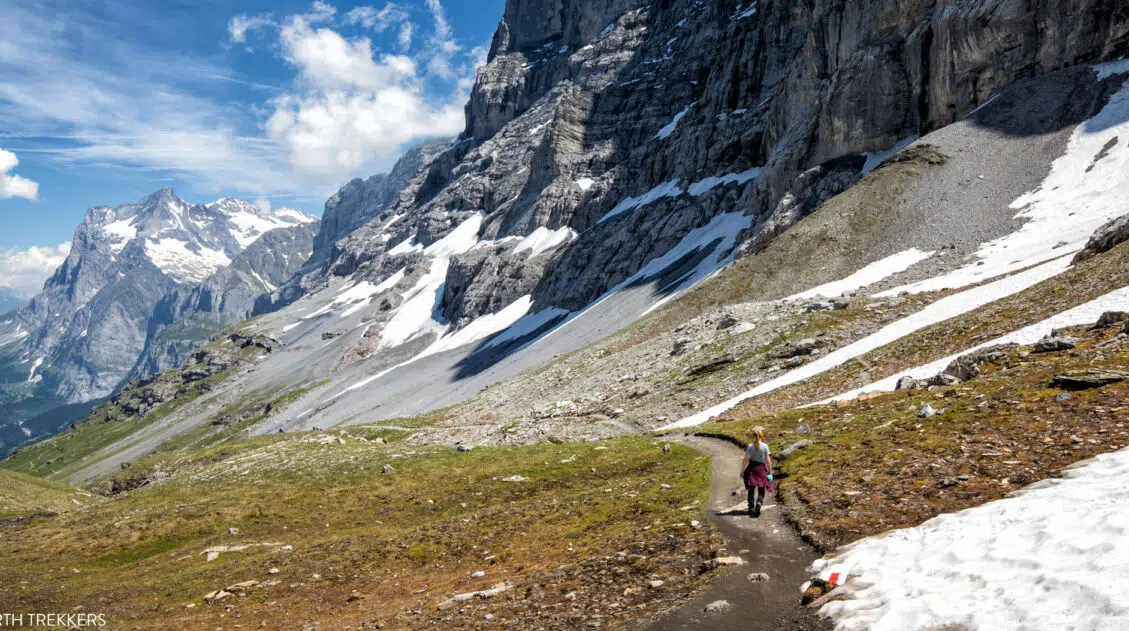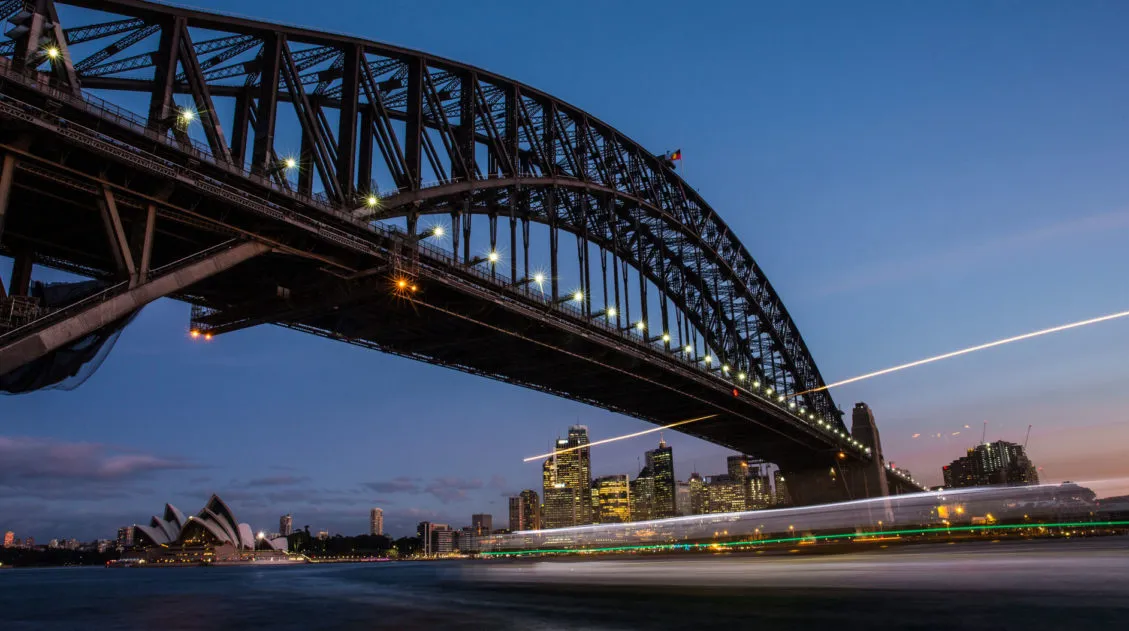Austria Travel Guide
Visit Austria… an enchanting country where renowned artists unearth their inspiration, and where ambitious adventurers dare to traverse the impressive Alps. Here, travelers can embark on a tour through the country’s opulent cities, each adorned with historic architecture and world-famous galleries. Or, step into the natural beauty of Austria’s countryside, dotted with traditional villages, castle ruins, and serene lakes.
Austria Stats
Official Language: German
Population: 9 million
Capital City: Vienna
Currency: Euro
Power Outlet: Type C & F
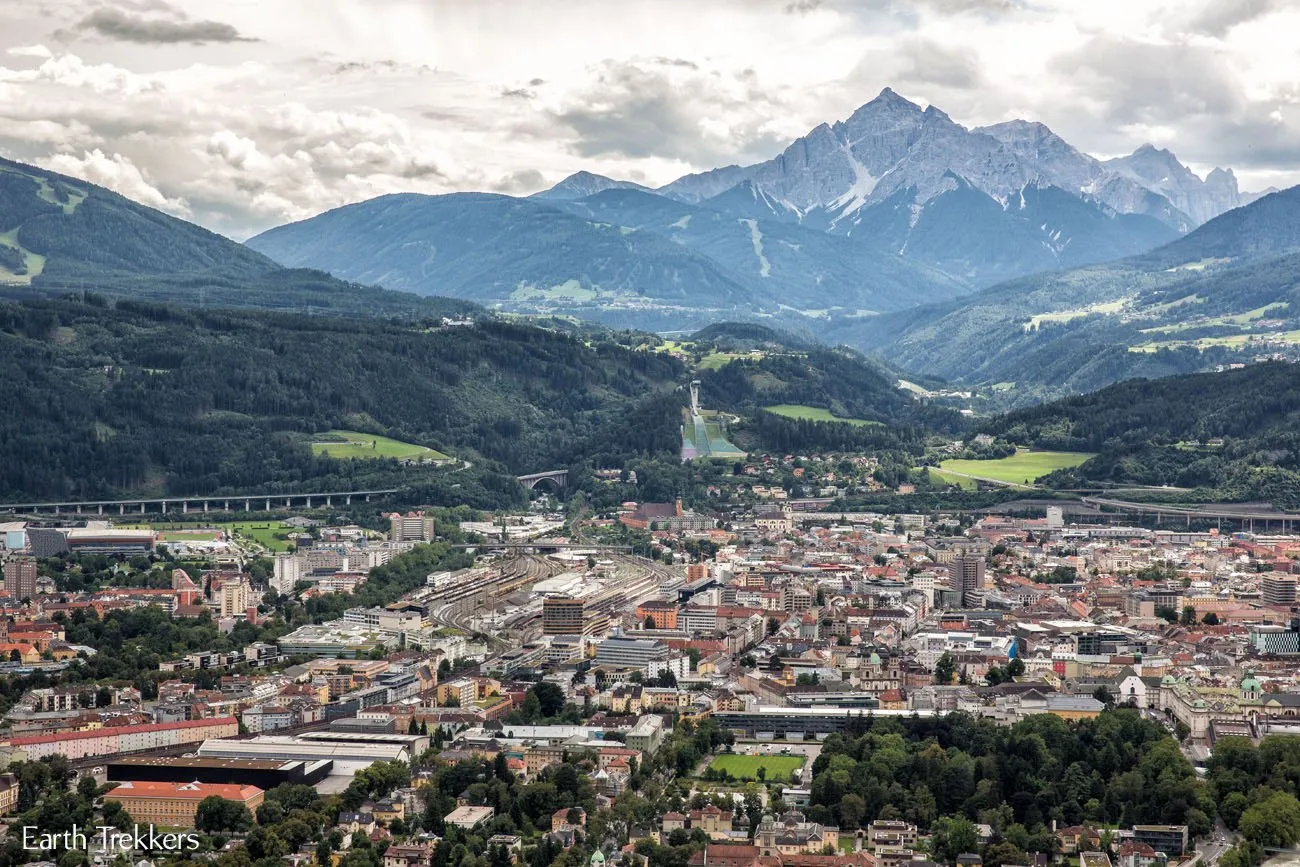
European Itineraries With Vienna
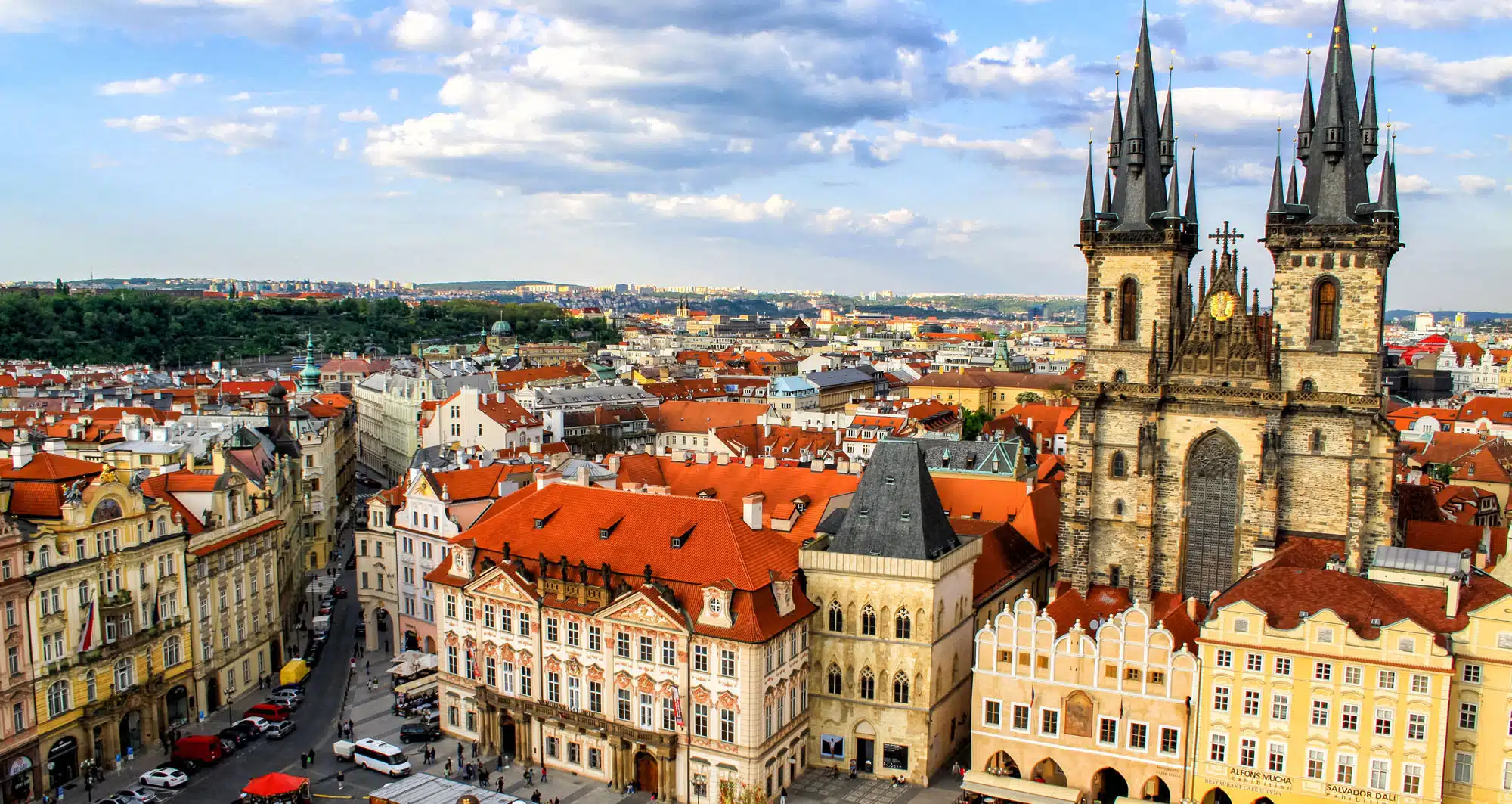
10 Day Central Europe Itinerary: Budapest, Vienna, & Prague
For those who want to tour three of Europe’s great cities, this central Europe itinerary is perfect. Start with Budapest, a gorgeous city known for its thermal baths, unique architecture, and stunning setting along the Danube River. Next, travel to Vienna, a sophisticated city rich in history and culture. End with Prague, the most beautiful of the three cities, laced with Gothic architecture.
Vienna
Vienna Bucket List: 25 Amazing Things to Do in Vienna
Dine at a Viennese café, visit the Hofburg Palace and Schönbrunn Palace, have a slice of Sacher Torte, stroll along Vienna’s bustling pedestrian streets, and ride the oldest Ferris wheel in the world…these top the list of things to do in Vienna. Vienna is the largest city and the capital of Austria. It sits on […]
Vienna Christmas Markets 2025 | Where to Eat, Drink & Shop
If you have plans to visit Vienna in December, you are in for a holiday treat. The Vienna Christmas markets are some of the best in Europe. In mid-November, Vienna transforms into a magical wonderland. Small markets spring up on famous squares and in front of historic buildings. For sale are holiday gifts, arts and […]
How to Plan a Trip to Vienna: A Guide for First Timers
The city of Vienna is renowned for its UNESCO-listed historic city center, café culture, world class museums, and opulent palaces. On a visit to Vienna, you can explore this city’s historical and cultural treasures, learn more about the Habsburg family as you tour Hofburg and Schönbrunn palaces, and indulge on pastries and cakes at a […]
Christmas in Vienna: Christmas Lights Walking Tour & Festive Things to Do
From late November through December, Vienna transforms into a holiday wonderland. Festive lights are strung up along this city’s famous streets and small markets pop-up all-over town. Imagine yourself sipping on hot mulled wine, shopping at the markets, and going for a stroll along the brilliantly illuminated streets. These experiences create a memorable Christmas in […]
Best Cafés in Vienna: 10 Must-Visit Coffee Houses & Patisseries
Welcome to Vienna, a city of music, culture, and of course, charming cafés and coffee houses. Dining on elegant Viennese pastries paired with freshly brewed coffee is a quintessential experience for locals and visitors. Join us as we uncover the best cafés in Vienna, from iconic establishments to hidden gems. This guide starts with our […]
One Perfect Day in Vienna | Best of Vienna in 24 Hours
Planning a trip to Austria and only have one day in Vienna? With a well-planned day, you can visit Vienna’s must-see sights, including St. Stephen’s Cathedral and Hofburg Palace, and dine in one or more famous coffee houses. This itinerary is a wonderful mix of must-visit places plus a few memorable dining experiences. In this […]
2 Days in Vienna Itinerary: How to Plan a Trip to Vienna
If you are planning your first trip to Vienna, this Vienna itinerary is perfect. With 2 days in Vienna, you have just enough time to see the highlights of this incredible city. Explore the historic heart of Vienna, tour Schönbrunn and Hofburg Palaces, dine in a Viennese café, and get a bird’s eye view of […]
Innsbruck
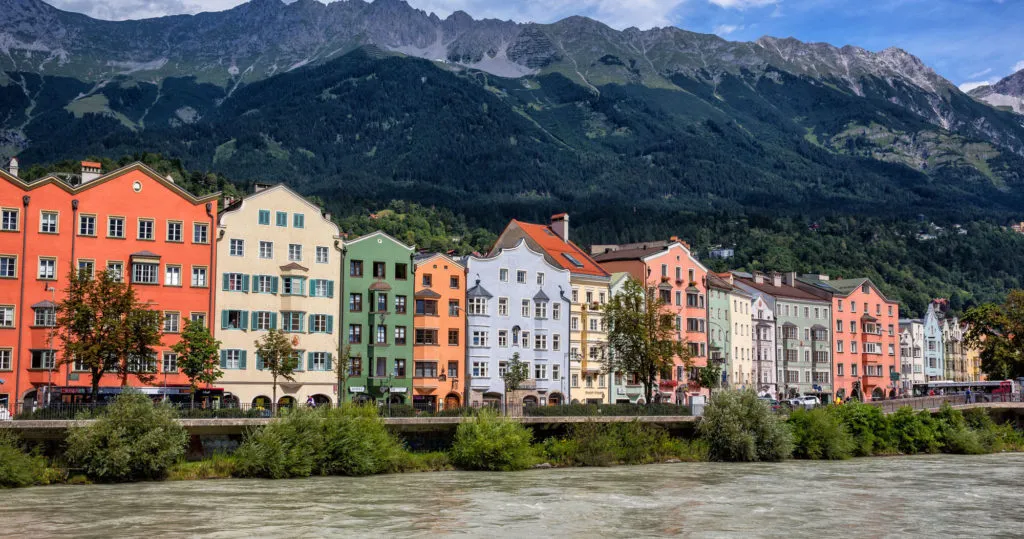
8 Great Things to Do in Innsbruck, Austria
Innsbruck is a colorful, picturesque city nestled in the Austrian Alps. Its biggest draw is its location. Innsbruck sits in a valley and it surrounded by enormous, snow-capped mountains. This is a city with endless views…ride cable cars to the mountain peaks, visit a ski jump, or climb the Town Tower for unbeatable views. With its close proximity to Italy and Germany, Innsbruck makes a great stop on a road trip or railway trip through Europe.
Salzkammergut Region
One Perfect Day in Salzburg, Austria (Updated for 2025)
Nestled in the foothills of the Alps, Salzburg is a compact city that is easy to explore in just one day. It’s the perfect blend of history and culture, being home to Mozart, an ancient fortress, and several Sound of Music sites. With one day in Salzburg, explore the old town, enjoy the view from […]
One Perfect Day in Hallstatt, Austria
Hallstatt is a picture-perfect town in Austria. This was once a quiet place, off of the radar of many European visitors. However, in recent years, Hallstatt has become one of the most popular places to visit in Austria. Spending one day in Hallstatt can be a wonderful experience, there are just some things you should […]
Austria & Germany Trips
10 Day Bavaria Itinerary & Road Trip Guide
Bavaria is the southeast region of Germany, the land of fairytale castles, Oktoberfest, and lederhosen. With the Alps to the south and idyllic towns dotting its hillsides, Bavaria is a beautiful and romantic destination. View the Alps from Germany’s highest peak at Zugspitze, tour crazy King Ludwig II’s storybook castle Neuschwanstein, learn about WWII history […]
How to Visit Zugspitze from Germany and Austria
Zugspitze, Germany’s highest peak (2962 meters), is located in southern Germany on its border with Austria. Visiting Zugspitze is a fantastic half day excursion which can easily be accomplished from both Austria and Germany. How to Visit Zugspitze Austria or Germany? Since Zugspitze sits on the border between Austria and Germany, it can be accessed […]
The Perfect Bavaria Germany Christmas Market Itinerary
It’s no secret that Germany hosts some of the best Christmas markets in Europe. But unless you have tons of time, it’s best to concentrate on one region of Germany. This Christmas market itinerary focuses on southern Germany. Not only will you visit some of the most historic markets in Europe, but you will tour […]
Top Experiences in Austria
Vienna: Vienna is a fabulous city that is home to world class museums, the Opera, cafes, pastries, and the famous Sacher Torte. Tour the city’s iconic palaces, including the Schӧnbrunn Palace and Hofburg Palace where some of Europe’s most influential people lived centuries ago. And, admire some of the world’s most outstanding works of art at the dazzling Kunsthistorisches Museum and at Vienna’s renowned galleries.
Salzburg: Nestled in the foothills of the Alps, Salzburg is a compact city that is easy to explore in just one day. It’s the perfect blend of history and culture, being home to Mozart, an ancient fortress, and several Sound of Music sites. With one day in Salzburg, explore the old town, enjoy the view from Hohensalzburg, and visit Mozart’s birthplace. And, if you are looking to experience Austria’s natural scenery, the area around Salzburg is home to some of Austria’s most scenic hikes.
Innsbruck: Innsbruck is a colorful, picturesque city nestled in the Austrian Alps. Its biggest draw is its location. Innsbruck sits in a valley and is surrounded by enormous, snow-capped mountains. This is a city with endless views…ride cable cars to the mountain peaks, visit a ski jump, or climb the Town Tower for unbeatable views. With its close proximity to Italy and Germany, Innsbruck makes a great stop on a road trip or railway trip through Europe.
Hallstatt: Hallstatt is a picture-perfect town in Austria. This was once a quiet place, off of the radar of many European visitors. However, in recent years, Hallstatt has become one of the most popular places to visit in Austria. Spending one day in Hallstatt can be a wonderful experience, just be prepared for large crowds. Nearby Hallstatt travelers can take a cable car to Dachstein Krippenstein at the top of the Alps for beautiful views over the Austrian village and stunning valley.
Wachau Valley: Home to green rolling fields, artisanal vineyards, and the idyllic Danube river is Austria’s beautiful Wachau Valley. This destination is only an hour outside of Vienna, and it is a place for nature-lovers to hike, cycle, have a glass of wine, and tour Baroque towns. Within Wachau Valley lies the medieval villages Krem, Melk, and Durnstein; each claiming churches, abbeys, and castle ruins to see, and cozy restaurants to enjoy.
Zell am See Lake: The region around Zell am See is a stretch of paradise just a short train ride away from Salzburg. The lake’s aquamarine surface is surrounded by the soaring Alps, panoramic trails, and quaint towns. Mountain peaks Schmittenhöhe and Gipfelwelt offer spectacular views over the region, and the lake offers both water sports and ideal spots to relax amongst Austria’s natural beauty.
Hohe Tauern National Park: As Austria’s largest and oldest national park, Hohe Tauern is situated amidst Eastern Tirol, Salzburg, and Carithian states. With its prime location, the national park is a wonderland of Austria’s alpine beauty, mountain views, and diverse wildlife. Outdoor adventurers will want to traverse the national park’s mountainous terrain, see Krimml Waterfalls – the largest falls in Europe, and get up close to the region’s many glaciers.
Drive the Grossglockner High Alpine Road: Within the heart of Hohe Tauern National Park and beneath Austria’s largest mountain peak, lies the country’s most magnificent scenic drive. Panoramic views of lush alpine meadows, large glaciers, waterfalls, and stunning mountain views will amaze any who set foot on this road. Along the way lie hikes, museums, and expositions to experience, giving travelers a full appreciation of the beauty of the eastern Austrian Alps.
Explore the Carinthia region: Austria’s southern region, Carinthia, offers a harmonious blend of inspiring views, alpine adventures, and tranquil lakes. Within Carinthia travelers can hike Grossglockner – Austria’s highest peak, relax on the shores of Worthersee Lake, visit the medieval Hochosterwitz Castle, and wander cities Klagenfurt and Villach. This region’s beauty, long history, and cultural heritage makes for a spectacular Austria destination that visitors will long to return to.
Hike and Ski in Tyrol and Vorarlberg: Austria’s westernmost provinces of Tyrol and Vorarlberg are a frontier for hiking, skiing, and all things adventure. Travelers can traverse Tyrol’s and Vorarlberg’s large expanse of alpine meadows, jagged peaks, glassy lakes, and awe-inspiring vistas on a series of hikes and treks. Famed resort towns offer nature exploration tours and some of the world’s best winter skiing.
Graz: As Austria’s second largest city, Graz is often overshadowed by touristy Vienna. Yet Graz remains a top Austrian destination with classical European architecture, open Baroque squares, modern art centers, and some of Austria’s best restaurants.
Linz: Linz is a city for those passionate about the arts. Though the city doesn’t meet Vienna’s architectural beauty, Linz is a unique place that seamlessly mixes the traditional and modern. Linz’s old town is delightful with colorful buildings and traditional cobbled streets. Meanwhile, bold glass structures contain the city’s core art centers. Street art overtakes industrial centers, and the gothic New Cathedral rises above the city.
Tour Eisriesenwelt, the World’s Largest Ice Cave: The Eisriesenwelt Ice Cave is a mystifying natural wonder with 26 miles of frigid walls, stalactites, ice sculptures, and frozen waterfalls. Guided tours lead groups through the cave by light of petroleum lamps and phosphor luminaires while providing a detailed history of the cave and explanation of its formation.
Best Time to Visit Austria
Peak season is the summer months of June, July and August, and sometimes this busy season spills over into September. During these months, expect large crowds and higher prices.
Austria’s winter weather can become cold and dreary, however its towns become decorated for Christmas, blankets of snow cover the Alps, and resort towns become populated with skiers. There is a rise in visitors in December, but otherwise Austria sees few wintertime crowds.
The months of March, April, May, October, and November are the best time to visit if you want to avoid the crowds and hot temperatures.
Europe Travel Inspiration & Practical Info
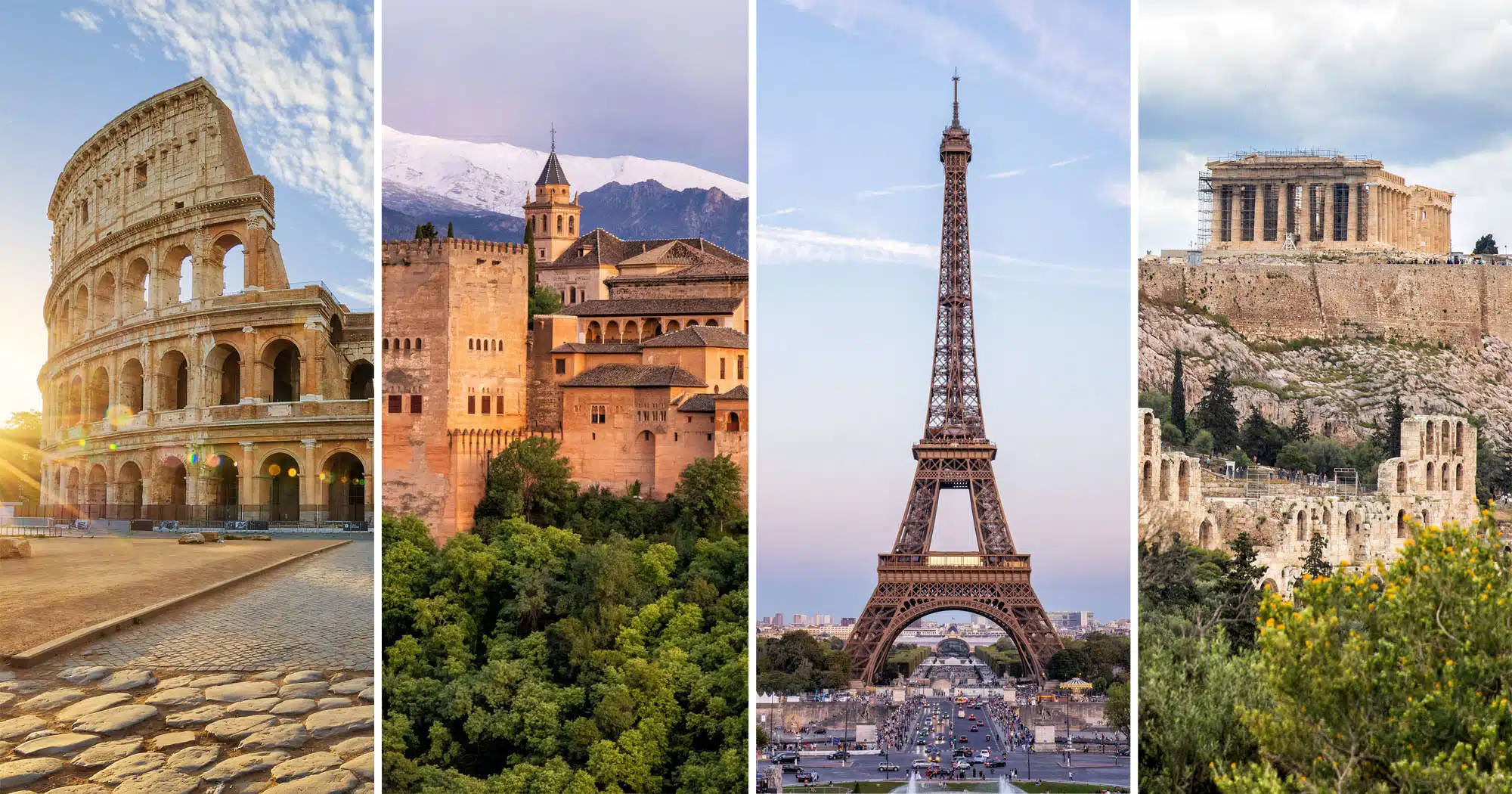
30 Popular Tourist Attractions in Europe & How to Visit Them
From world class museums and ancient archaeological sites to stunning natural wonders, Europe boasts a diverse array of attractions that attract millions of visitors every year. Here are 30 of the most popular tourist attractions in Europe and how to visit them.
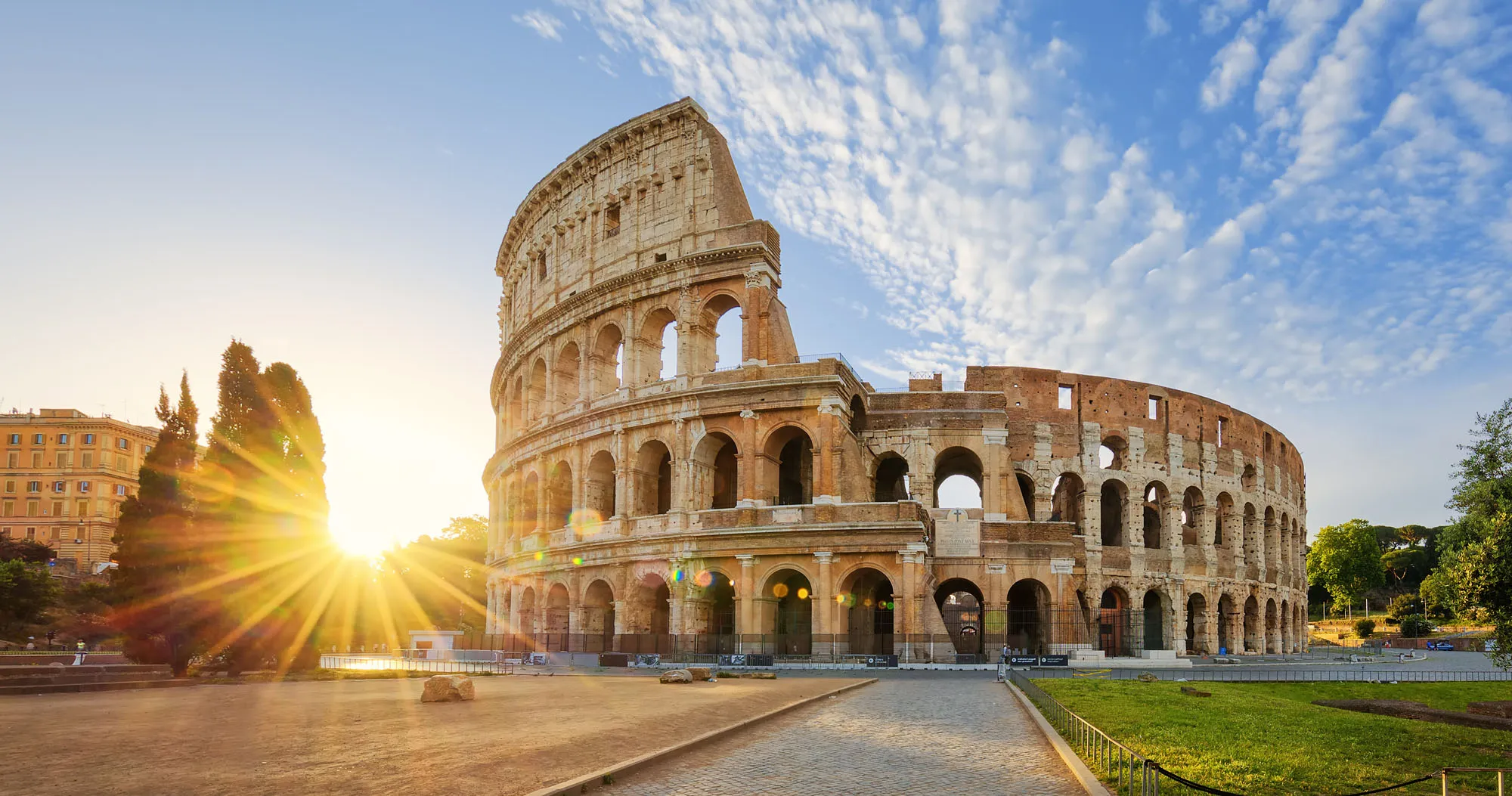
One Week in Europe: 25 Epic Itineraries
Do you dream of visiting world-class cities like Paris, Barcelona, or Venice? Or would you rather hike the Alps, go on a scenic train ride, explore the beautiful beaches and coastal towns in southern Europe, visit fairytale towns and castles, island hop in Greece, or go on an unforgettable road trip in northern Europe?
In this article we list 25 ways to spend one week in Europe.
10 Days in Europe: 10 Amazing Itineraries for Your Next Trip
Europe is a joy to explore. With world-class cities, medieval towns, historical sites, the snowcapped Alps, gorgeous beaches, and some of the world’s most delicious food, you have the perfect ingredients for your next vacation. If you want to spend 10 days in Europe, we have ten amazing itineraries to share with you. In this […]
15 Things You Should Know about Renting a Car in Europe
Having a car provides a lot of freedom and convenience when traveling through Europe. You can travel at your own pace, stop frequently to take in the view, and get to some places that are difficult to reach with public transportation. However, there are some things to know about renting a car in Europe. Knowing […]
30 Beautiful Places to Visit in Europe (+ Map and Photos)
It is no secret that Europe is filled with beautiful places to visit. With its grand cities, fairytale-like towns, soaring mountain ranges, and gorgeous beaches, there is a seemingly endless list of gorgeous places to explore. Whether you are planning your next trip to Europe, or just trying to figure out where to travel to […]
7 Things to Know When Planning Your First Trip to Europe
If you are planning your first trip to Europe, it can be an overwhelming experience. Where should you go? How much will it cost? How many places can you visit? Does this sound familiar? We get emails every day from people who want advice planning their first trip to Europe. And we see the same […]
Best Hikes in Europe: Our 20 Favorite Day Hikes
Europe is one of our favorite places to go hiking. There’s no better way to explore the dramatic and varied landscapes here, from the snow-capped Alps to coastal trails to the remote, volcanic interior of Iceland. In this guide we list 20 of the best hikes in Europe, 20 amazing ways to explore this beautiful […]
Travel Photography Gear Guide: What’s In Our Camera Bag
Do you want to know how we capture the images that you see on our website? Here is our photography gear guide, with links and explanations of our photography gear and accessories. At the end of this post, we offer tips and tricks on how to take better photographs while traveling. Photography Gear Guide The […]
